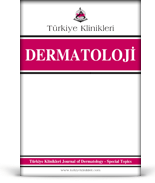Objective: Success of the treatment of warts with cryotherapy differs from patient to patient. We aimed to evaluate how the age and gender of the patient, the type, number, duration, localization of warts and cryotherapy session intervals affect the success of treatment. Material and Methods: After ethics committee approval had been received, the medical files of patients with diagnosis of wart, between June 2016 and June 2019, were analysed retrospectively. Demographic and clinical features of patients were recorded. Patients who did not improve clinically after 6 sessions were considered resistant to treatment. Demographic and clinical features were compared between treatment resistant and non-resitant groups by using SPSS 17 (Chicago, IL, USA), twosided p value 10 mm were compared and resistance rates were found respectively 14.7%, 31.5%, 60%. Difference between subgroups was statistically significant (p=0.01). The mean age, lesion localization, lesion number, verruca subtype, duration of the disease and the session intervals for both groups were found similar (p>0.05). Conclusion: Treatment success was found to be lower in women and in patients with larger warts.
Keywords: Warts; cryotherapy; treatment failure; female
Amaç: Kriyoterapi ile siğil tedavisinin başarısı hastadan hastaya farklılık göstermektedir. Hastanın yaşı ve cinsiyeti, siğillerin tipi, sayısı, süresi, lokalizasyonu ve kriyoterapi seans aralıklarının tedavi başarısını nasıl etkilediğini değerlendirmeyi amaçladık. Gereç ve Yöntemler: Etik kurul onayı alındıktan sonra Haziran 2016 ile Haziran 2019 tarihleri arasında siğil tanısı alan hastaların tıbbi dosyaları retrospektif olarak incelendi. Hastaların demografik ve klinik özellikleri kaydedildi. 6 seans sonrasında klinik olarak düzelmeyen hastalar tedaviye dirençli olarak kabul edildi. Tedaviye dirençli ve dirençli olmayan gruplar arasında demografik ve klinik özellikler SPSS 17 (Chicago, IL, USA) kullanılarak karşılaştırıldı, iki taraflı p değeri <0,05 istatistiksel olarak anlamlı kabul edildi. Bulgular: 98 hastanın 56'sı (%57.2) kadın, 42'si (%42.8) erkekti. Ortalama yaş 21.98±12.80 yıl idi. Tüm hastalardan 28'i (%28.6) tedaviye dirençli idi. Dirençli grupta K/E oranı 20/8 (%71,4/28,6), dirençli olmayan grupta 36/34 (%51,4/48,6) idi. Gruplar arasındaki fark istatistiksel olarak anlamlıydı (p=0.04). Siğil boyutları 0-4,9 mm, 5-10 mm, >10 mm olan hastalar karşılaştırılmış ve direnç oranları sırasıyla %14.7, %31.5, %60 olarak bulundu. Alt gruplar arasındaki fark istatistiksel olarak anlamlıydı (p=0.01). Her iki grubun yaş ortalaması, lezyon lokalizasyonu, lezyon sayısı, verruka alt tipi, hastalık süresi ve seans aralıkları benzer bulundu (p>0.05). Sonuç: Kadınlarda ve daha büyük siğilleri olan hastalarda tedavi başarısı daha düşük bulundu.
Anahtar Kelimeler: Siğiller; kriyoterapi; tedavi başarısızlığı; kadın
- Androphy EJ, Lowy DR. Warts. In: Wolff K, Goldsmith LA, Katz SI, Gilchrest BA, Paller AS, Leffell DJ, eds. Fitzpatrick's Dermatology in General Medicine. 7th ed. New York: Mc Graw-Hill; 2008. p.1914-23.
- Williams HC, Pottier A, Strachan D. The descriptive epidemiology of warts in British schoolchildren. Br J Dermatol. 1993;128(5):504-11. [Crossref] [PubMed]
- Sterling JC, Handfield-Jones S, Hudson PM; British Association of Dermatologists. Guidelines for the management of cutaneous warts. Br J Dermatol. 2001;144(1):4-11. [Crossref] [PubMed]
- Gibbs S, Harvey I. Topical treatments for cutaneous warts. Cochrane Database Syst Rev. 2006;(3):CD001781. Update in: Cochrane Database Syst Rev. 2012;9:CD001781. [Crossref] [PubMed]
- Zacarian SA. Cryosurgery for skin cancer and cutaneous disorders. 1st ed. St. Louis: Mosby; 1985. [Crossref]
- Kuflik EG. Cryosurgery updated. J Am Acad Dermatol. 1994;31(6):925-44; quiz 944-6. [Crossref] [PubMed]
- Keefe M, Dick DC. Cryotherapy of hand warts--a questionnaire survey of 'consumers'. Clin Exp Dermatol. 1990;15(4):260-3. [Crossref] [PubMed]
- Elton RF. The appropriate use of liquid nitrogen. Prim Care. 1983;10(3):459-78. [Crossref] [PubMed]
- Erbağcı Z, Kırtak N, Özgöztaşı O. [The effect of cryotherapy in verruca vulgaris and plantaris]. T Klin J Dermatol. 1996;6(1):18-20. [Link]
- Bruggink SC, Waagmeester SC, Gussekloo J, Assendelft WJ, Eekhof JA. Current choices in the treatment of cutaneous warts: a survey among Dutch GP. Fam Pract. 2010;27(5):549-53. [Crossref] [PubMed]
- Goldfarb MT, Gupta AK, Gupta MA, Sawchuk WS. Office therapy for human papillomavirus infection in nongenital sites. Dermatol Clin. 1991;9(2):287-96. [Crossref] [PubMed]
- Mahrle G, Alexander W. Surgical treatment of recalcitrant warts. J Dermatol Surg Oncol. 1983;9(6):445-50. [Crossref] [PubMed]
- Doğan G, Şaşmaz S. [Identification of the factors affecting the cryotherapy on warts]. Turgut Özal Tıp Merk Derg. 2006;13(3):163-6. [Link]
- Uçak H, Demir B, Çiçek D, Öztürk S, Erden İ, Seç S, et al. [Determination of resistance factors to cryotherapy treatment in patients with external genital verruca]. Dermatoz. 2015:1-7. [Link]
- Rasi A, Soltani-Arabshahi R, Khatami A. Cryotherapy for anogenital warts: factors affecting therapeutic response. Dermatol Online J. 2007;13(4):2. [Crossref] [PubMed]
- Stefanaki C, Hadjivassiliou M, Katzouranis I, Bethimoutis G, Nicolaidou E, Anyfantakis V, et al. Prognostic factors for the response to treatment in males with genital warts. J Eur Acad Dermatol Venereol. 2009;23(10):1156-60. [Crossref] [PubMed]
- Bunney MH, Nolan MW, Williams DA. An assessment of methods of treating viral warts by comparative treatment trials based on a standard design. Br J Dermatol. 1976;94(6):667-79. [Crossref] [PubMed]
- Bourke JF, Berth-Jones J, Hutchinson PE. Cryotherapy of common viral warts at intervals of 1, 2 and 3 weeks. Br J Dermatol. 1995; 132(3):433-6. [Crossref] [PubMed]
- Uyar B, Sacar H. Comparison of cryotherapy session intervals in the treatment of external genital warts. Dermatologica Sinica. 2014; 32(3):154-6. [Crossref]







.: Process List